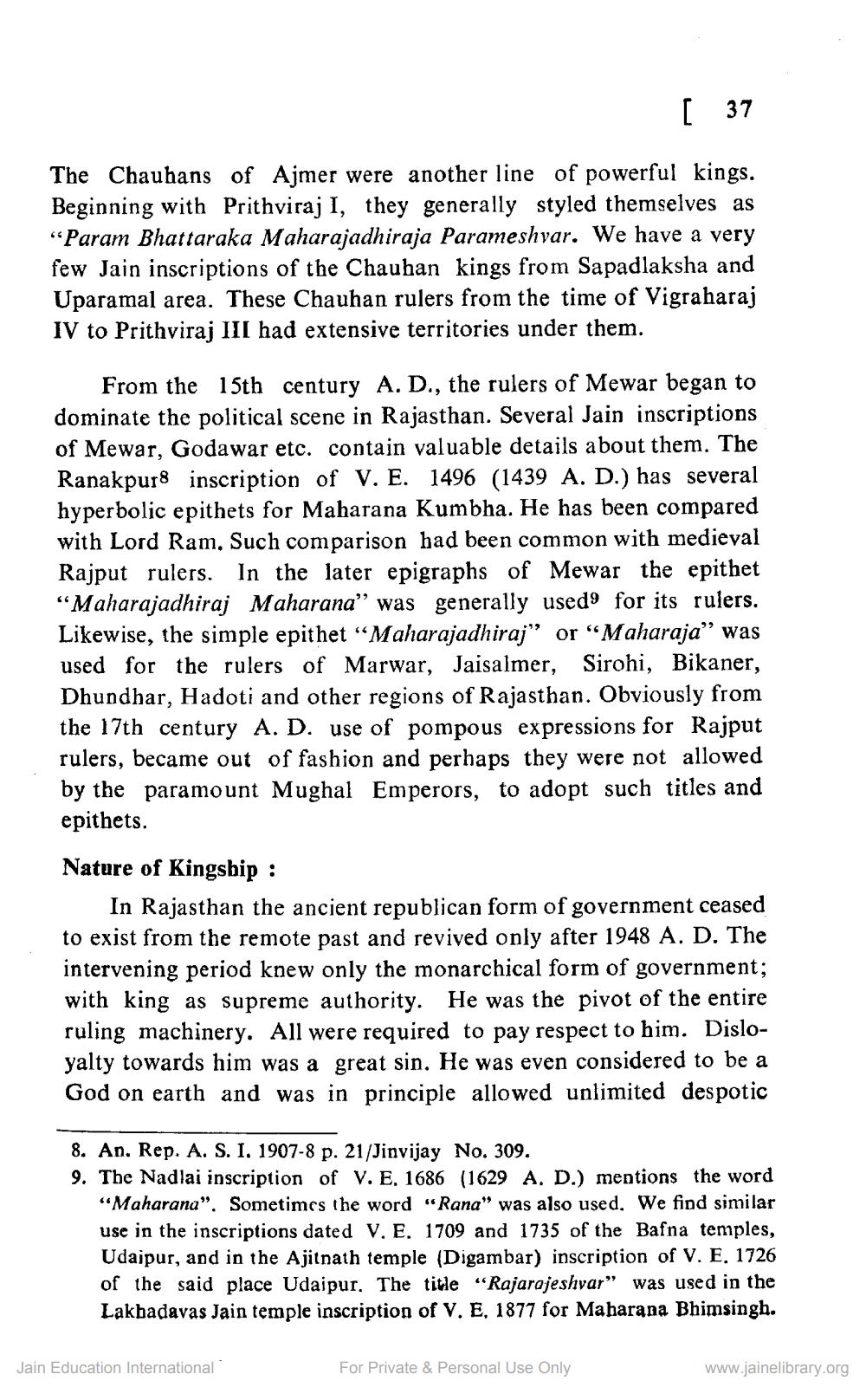________________
[ 37
The Chauhans of Ajmer were another line of powerful kings. Beginning with Prithviraj I, they generally styled themselves as "Param Bhattaraka Maharajadhiraja Parameshvar. We have a very few Jain inscriptions of the Chauhan kings from Sapadlaksha and Uparamal area. These Chauhan rulers from the time of Vigraharaj IV to Prithviraj III had extensive territories under them.
From the 15th century A. D., the rulers of Mewar began to dominate the political scene in Rajasthan. Several Jain inscriptions of Mewar, Godawar etc. contain valuable details about them. The Ranakpur8 inscription of V. E. 1496 (1439 A. D.) has several hyperbolic epithets for Maharana Kumbha. He has been compared with Lord Ram. Such comparison had been common with medieval Rajput rulers. In the later epigraphs of Mewar the epithet “Maharajadhiraj Maharana" was generally used for its rulers. Likewise, the simple epithet “Maharajadhiraj” or “Maharaja” was used for the rulers of Marwar, Jaisalmer, Sirohi, Bikaner, Dhundhar, Hadoti and other regions of Rajasthan. Obviously from the 17th century A. D. use of pompous expressions for Rajput rulers, became out of fashion and perhaps they were not allowed by the paramount Mughal Emperors, to adopt such titles and epithets.
Nature of Kingship :
In Rajasthan the ancient republican form of government ceased to exist from the remote past and revived only after 1948 A. D. The intervening period knew only the monarchical form of government; with king as supreme authority. He was the pivot of the entire ruling machinery. All were required to pay respect to him. Disloyalty towards him was a great sin. He was even considered to be a God on earth and was in principle allowed unlimited despotic
8. An. Rep. A. S. I. 1907-8 p. 21/Jinvijay No. 309. 9. The Nadlai inscription of V. E. 1686 (1629 A. D.) mentions the word
"Maharana". Sometimes the word “Rana" was also used. We find similar use in the inscriptions dated V. E. 1709 and 1735 of the Bafna temples, Udaipur, and in the Ajitnath temple (Digambar) inscription of V. E, 1726 of the said place Udaipur. The title “Rajarajeshvar" was used in the Lakbadavas Jain temple inscription of V. E, 1877 for Maharana Bhimsingh.
Jain Education International
For Private & Personal Use Only
www.jainelibrary.org




